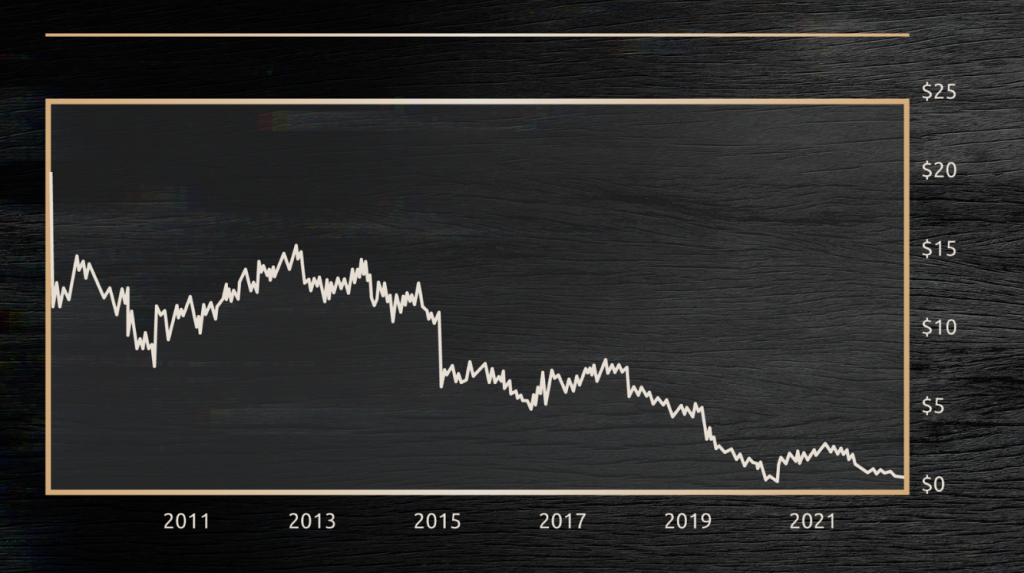Three ChatGPT Stocks to Grab Before They Explode
Let me start by saying that, from where I’m sitting, it’s a safe assumption that Artificial Intelligence isn’t going anywhere anytime soon. If there was anything indeed “here to stay,” AI is it, and in seemingly endless ways. While AI isn’t brand new, there’s no question that technology has reached a pivotal moment in our culture and has captured the minds of just about every person not living off the grid. So, we already know how cool AI platforms such as ChatGPT are, but what makes AI such a good investment?
Simply put, AI’s disruptive and transformative nature leaves many opportunities across many industries. As businesses adopt AI to innovate and improve performance, demand for AI-related products and services will inevitably grow, leading to massive returns. Traditional business models will have to face adjustments or take a back seat to the advancements in machine learning. As AI continues to grow, it’s attracting many long-term investors. It’s catching on quickly, too, so now is the time to hop on board.
We have three AI-involved companies whose stocks are each performing well, thanks mainly to the significant strides we see in ChatGPT. I’m eager to break ’em down, so join me here for a look:
Amazon.com Inc (AMZN)
Amazon.com, Inc. (AMZN) is a multinational online retail company. AMZN offers consumer products through online and physical stores, both domestically and internationally. AMZN also provides cloud computing services on a global scale. Founded by Jeff Bezos in 1994, AMZN is headquartered in Seattle, WA. AMZN is up YTD by 39.02%, with a positive SMA. AMZN has a $1.08 trillion market cap, a PEG ratio of 2.25x, a P/B ratio of 2.06x, and YOY growth in critical areas such as revenue (+9.37%), net income (+182.52%), EPS (+181.58), and net profit margin (+175.43). For its MRQ earnings call, AMZN beat analysts’ projections for EPS and revenue by 43.26% and 2.21%, respectively, and it has a free cash flow of just over $9 billion. AMZN has a TTM revenue of $524.9 billion at $0.42 per share, from which it profited $4.29 billion through its 2.54% margin. With a 10-day average volume of 67 million shares, AMZN has an average price target of $134.50, with a high of $165 and a low of $85; this represents a potential 41% price increase from where it sits at the moment. AMZN has 48 buy ratings and 4 hold ratings.
[stock_market_widget type=”accordion” template=”extended” color=”#5679FF” assets=”AMZN” start_expanded=”true” display_currency_symbol=”true” api=”yf”]
NVIDIA Corp (NVDA)
NVIDIA Corp. (NVDA) designs and manufactures GPUs, chipsets, and multimedia software for computers. NVDA’s brands, like GeForce, Quadro, DGX, and GRID each apply computing capabilities for various uses, including autonomous systems and gaming devices. Share price exploded for the ticker last week after the chipmaker reported blockbuster earnings and gave stronger-than-expected Q2 revenue guidance. NVDA has stacked on an impressive 164% YTD. NVDA has a $934 billion market cap, and its MRQ earnings report showed an EPS of $1.09 vs. $0.92 expected (+18.80% surprise) and $7.19 billion in sales vs. $6.52 billion predicted (+10.26% surprise). NVDA reports $27 billion in TTM revenue at $1.75 per share, and it made $4.37 billion via its 16.69% net profit margin. NVDA has a 0.05% annual dividend yield and a quarterly payout of 5 cents ($0.20/yr) per share. With a 10-day average trading volume of 40.91 million shares, NVDA has a median price target of $300, with a $460 high and a $175 low, representing a potential 50% price jump. NVDA has 36 buy ratings and 12 hold ratings.
[stock_market_widget type=”accordion” template=”extended” color=”#5679FF” assets=”NVDA” start_expanded=”true” display_currency_symbol=”true” api=”yf”]
Baidu Inc (BIDU)
Baidu, Inc. (BIDU) is a tech firm mainly providing internet search and online marketing solutions. BIDU’s products include Baidu App, Baidu Search, Baidu Feed, Haokan, Quanmin, and more. BIDU offers search-based and feed-based online marketing services, while iQIYI is its online entertainment platform. BIDU was founded by Xu Yong and Yanhong Li in 2000 and is based in Beijing, China. BIDU is up YTD by 4.14% and has a safe 0.67 beta. With a $41.64 billion market cap, BIDU has $18.4 billion in TTM revenue at $5.63 per share, profiting $1 billion on a 16.60% margin. BIDU has a P/E ratio of 13.7x, a forward P/E (NTM) of 12.1x, a 0.39x PEG, a P/S ratio of 2.47x, a P/B ratio of 1.36x, and a 37.80% D/E measure. BIDU has beaten analysts’ EPS forecasts for the last 13 consecutive quarters, surprising by 29.1% for its MRQ. BIDU shows excellent YOY growth in revenue (+9.62%), net income (+458.19%), EPS (+652.78%), and net profit margin (+701.39%), with a free cash flow of $16.75 billion and a 10-day average volume of 3.53 million shares. BIDU has a median price target of $173.67, with a high of $230.93 and a low of $110.95, representing a potential 94% price upside. Buy Now and Hold.
[stock_market_widget type=”accordion” template=”extended” color=”#5679FF” assets=”BIDU” start_expanded=”true” display_currency_symbol=”true” api=”yf”]
















